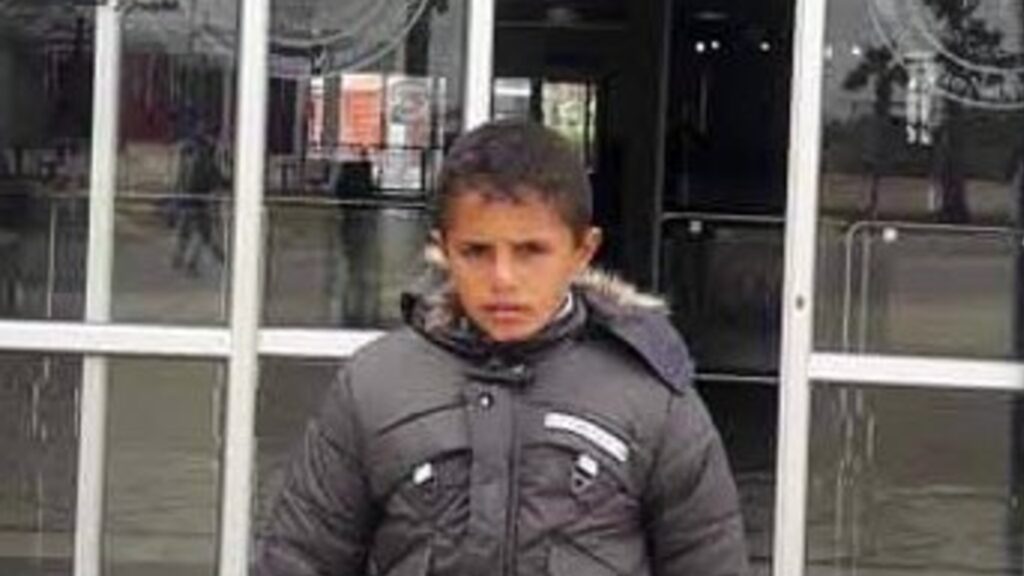Israeli forces killed a 12-year-old Palestinian boy who witnessed the mass execution of medics in southern Gaza earlier this year, his father told Middle East Eye.
Mohammed Saeed al-Bardawil was shot dead by Israeli naval forces on 10 May while fishing with his father off the coast of Rafah.
His death came just weeks after he survived the point-blank Israeli execution of 15 paramedics and Civil Defence workers responding to a strike in western Rafah on 23 March.
In that incident, his father, Saeed al-Bardawil, states he was walking with his son in the Tal al-Sultan area when special Israeli forces suddenly appeared and detained them.
Along with some others, they were stripped, bound and held at gunpoint by soldiers who ordered them to lie face down just metres from a smouldering Red Crescent ambulance that had been struck earlier.
New MEE newsletter: Jerusalem Dispatch
Sign up to get the latest insights and analysis on
Israel-Palestine, alongside Turkey Unpacked and other MEE newsletters
Around 5am, additional ambulances and a Civil Defence fire truck arrived at the scene on a rescue mission.
As responders approached the bombed vehicle, where fellow medics lay dead or wounded, Israeli soldiers opened fire directly on them, the father said.
Al-Bardawil said he and others were blindfolded, but not Mohammed, who was spared due to his young age.
“He saw everything,” the father said. “He narrated it to me in real time as I lay blindfolded beside him.”
The gunfire lasted up to seven minutes.
‘They fired dozens of bullets at the medics, shooting them at point-blank range’
– Saeed al-Bardawil, Palestinian father
“The soldiers began advancing towards the ambulances, first five soldiers, then another five. Some young men were lying outside, and others were still inside the ambulance,” Bardawil told MEE.
“As the soldiers approached, they fired dozens of bullets at the medics, shooting them at point-blank range above their heads.
“The medics were calling for help. Then the gunfire grew louder, and the voices stopped,” he recounted.
Mohammed saw what his father could not: the systematic execution of responders in their uniforms, including those calling out for help. As more soldiers moved in, some of the injured were finished off at point-blank range.
In the aftermath, the Israeli military used a bulldozer to dig a pit, burying the medics’ bodies under sand before placing the damaged ambulances and fire truck on top.
A UN-marked vehicle was crushed by a tank, according to the account.
Al-Bardawil and his son were repeatedly moved, interrogated, and eventually blindfolded again, though Mohammed was left unblindfolded.
“They made us sit in a pit with guns aimed at us. Mohammed turned to me and said: ‘Dad, what do we do? They’re going to kill us… I wish they’d just arrest us instead.’”
The soldiers eventually released Mohammed and his father.
‘Then came a single bullet’
Just weeks later, on 10 May, as he and his father fished in the early morning off Gaza’s coast, an Israeli naval boat approached.
“We tried to flee, and they opened fire. First shells, then live rounds. Then came a single bullet,” his father said.
“Mohammed said, ‘Dad, I’ve been shot,’ and collapsed.”
He died shortly after arriving at the Red Cross Hospital.
“It was a targeted, deliberate killing,” said al-Bardawil.
The massacre of medics drew international condemnation and prompted calls for an independent investigation.
Israeli forces initially claimed that soldiers had opened fire on vehicles approaching their position in the dark without emergency lights or markings, deeming them “suspicious”.
They also falsely alleged that the vehicles were being used by Hamas and Palestinian Islamic Jihad.
However, this account was proved wrong after video footage retrieved from the mobile phone of one of the victims – released by the Palestine Red Crescent Society (PRCS) – contradicted the military’s version of events.
The video showed emergency workers in uniform, operating clearly marked ambulances and fire trucks with lights on, coming under direct fire from Israeli soldiers.
According to the International Committee of the Red Cross, the incident constitutes the deadliest single attack on Red Cross or Red Crescent personnel anywhere in the world since 2017.


